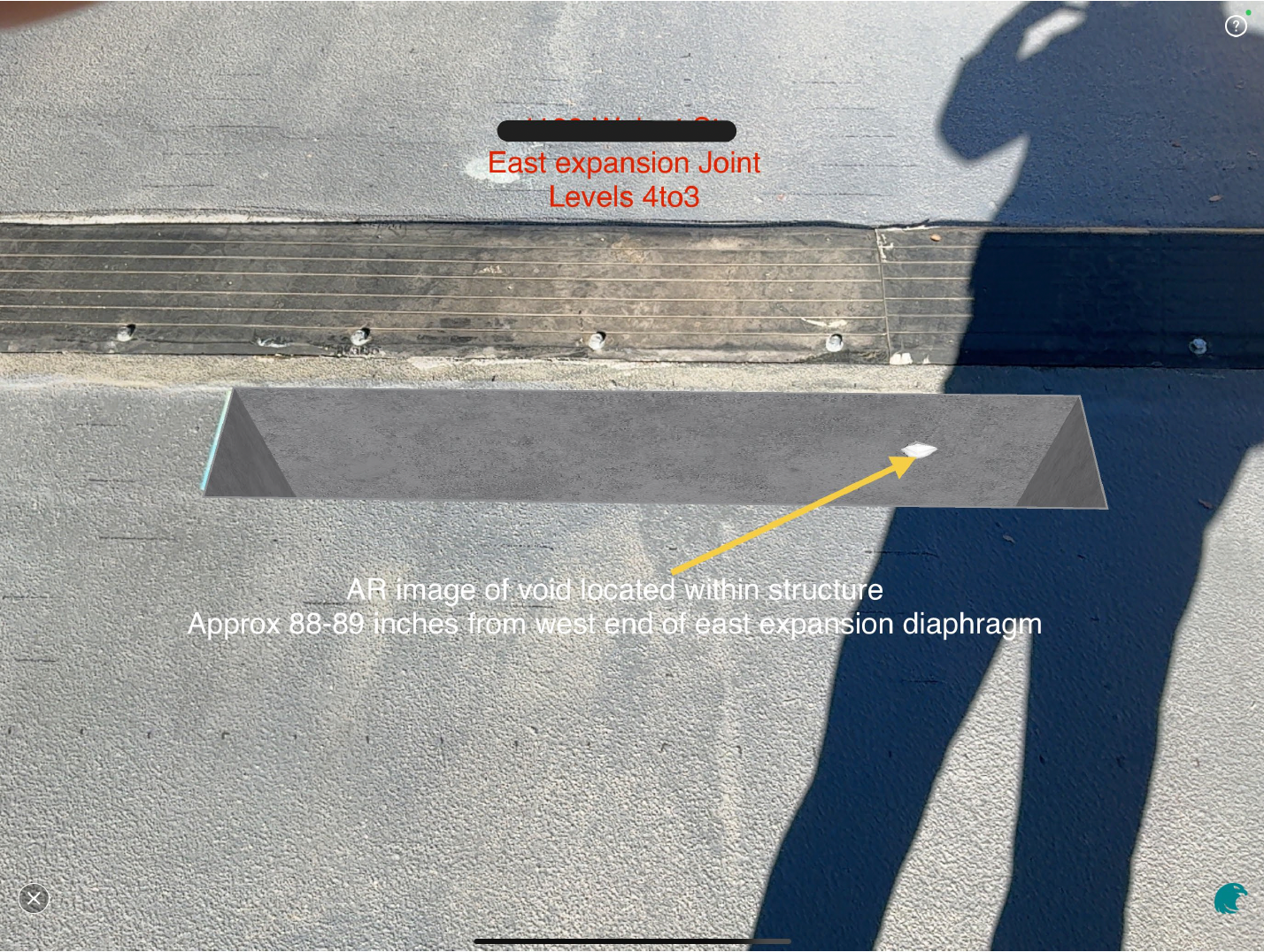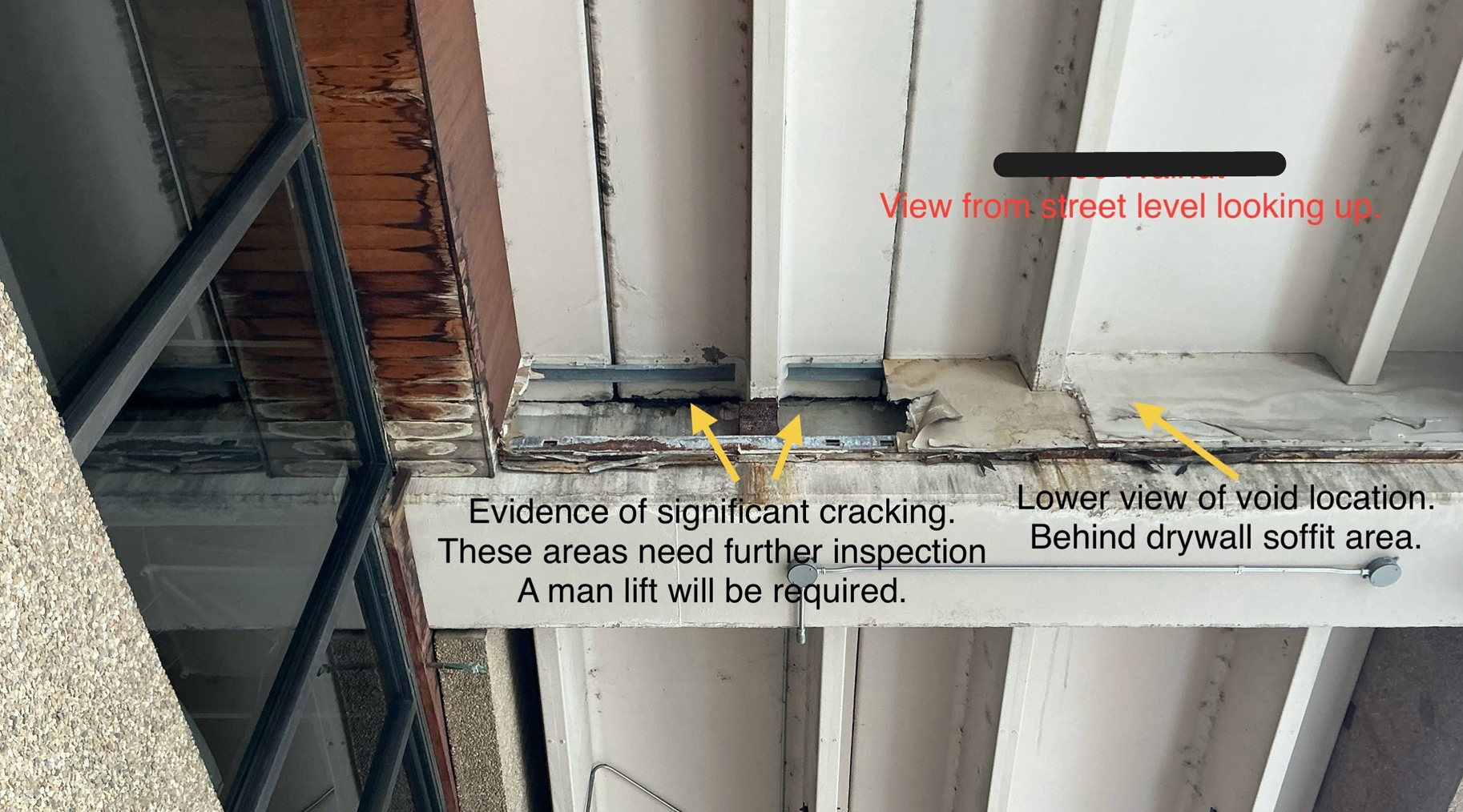Parking Structure Water Intrusion Investigation
This is a subtitle for your new post

Parking Structure Water Intrusion Investigation: A Case Study
Multi-Level Commercial Parking Facility Assessment Using Advanced NDT Methods
Executive Summary
This case study examines the investigation of water intrusion issues in a multi-level commercial parking structure located in a major Colorado city. Using advanced non-destructive testing (NDT) methods including Ground Penetrating Radar (GPR) and Ultrasound technology, the investigation revealed critical structural concerns requiring immediate attention.
Background
The subject property consists of a multi-level parking garage integrated with commercial spaces.
The structure features:
- Multiple parking levels connected by vehicular ramps
- Reinforced concrete construction
- Structural support columns and "Twin T" beams
- Commercial tenant spaces on the third floor
- Critical expansion joints between levels 4-3 and 4-5
Investigation Objectives
The primary goal was to non-invasively evaluate specific areas of the parking garage ramps, particularly focusing on:
- Transitions between levels 4-3 and 4-5
- Water damage affecting third-floor tenant spaces
- Structural integrity of expansion joints Methodology Equipment Used:
- Proceq GP8800 with multiband 400-6000Mhz antenna
- Proceq PD8050 Pundit Array (8 channels, 20-80hz bandwidth)
Inspection Process:
- GPR scanning at 5.0 scans/inch
- 3D Ultrasound imaging in 10×20cm sections
- 1.5-meter increment measurements
- Data analysis using Proceq version 5.3.2 software
Key Findings
1. East Expansion Joint (Level 4-3 Ramp)
- Major void detected 88 inches from west end
- Direct correlation with reported water intrusion
- Confirmed through ultrasound imaging
2. West Expansion Joint (Level 4-5 Ramp)
- Multiple small voids identified Potential for progressive deterioration
- Secondary water infiltration pathways present
3. Demising Wall Assessment
- Missing flashing
- Damaged rubber seal around railing support
- Contributing to water infiltration
Recommended Action Plan
1. Immediate Actions o Selective demolition of deteriorating soffit
- Coordination of tenant space access for inspections
- Structural beam assessment
2. Remediation Steps
- Water intrusion mitigation
- Expansion joint replacement
- Concrete repairs following ICRI guidelines
3. Long-term Management
- Implementation of asset management system
- Regular monitoring schedule
- Preventive maintenance protocols
Asset Management Recommendations
1. Resource Optimization
- Budget allocation based on condition assessment
- Prioritized maintenance scheduling
2. Asset Life Extension
- Proactive maintenance protocols
- Regular inspection schedules
3. Service Enhancement
- Quality standards maintenance
- Performance monitoring
4. Risk Mitigation
- Early detection protocols
- Preventive maintenance scheduling
Conclusion
The investigation revealed significant structural concerns requiring immediate attention while providing a framework for long-term facility maintenance. Implementation of the recommended measures will address both immediate structural issues and establish protocols for ongoing maintenance to prevent future deterioration.
The findings emphasize the critical nature of prompt attention to prevent further deterioration and ensure continued safe operation of the facility. This case study demonstrates the effectiveness of advanced NDT methods in identifying and assessing structural issues in parking facilities.

All Rights Reserved | INDEPTH LLC